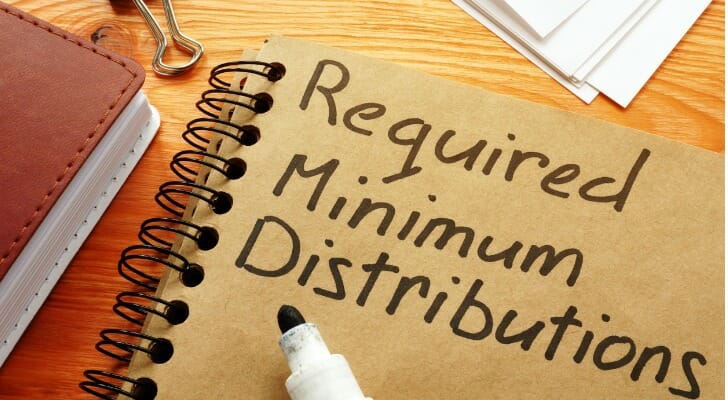The SECURE 2.0 Act, signed by President Biden in December 2022, includes dozens of changes to provisions related to tax-advantaged retirement accounts. Among the most important changes is a provision, which took effect Jan. 1 of this year, that delays until age 73 when account holders must start taking required minimum distributions (RMDs) from their 401(k) or IRA. The act also schedules more RMD delays over the next 10 years.
Consider matching with a vetted financial advisor for free as you create or modify a retirement plan.
What Are RMDs?
You don’t pay taxes on the money in your IRA or 401(k) when you put it in, which is why these accounts are considered tax-advantaged retirement accounts. Instead, you pay taxes when you withdraw the funds in retirement. The money will be taxed according to your current tax bracket in retirement. This is beneficial if you are in a lower tax bracket in retirement than you were when you first earned the money.
If you were to leave all of your money in your IRA, it would eventually become eligible to be passed on as inheritance and perhaps end up un-taxed, something the Internal Revenue Service (IRS) makes sure does not happen. The RMD forces you to take out some money while it can still be taxed.
Before the SECURE 2.0 Act, or the Securing a Strong Retirement Act, was signed into law, you had to take RMDs following the year you turn 72 or 70.5 if you were born before July 1, 1949.
What Washington Changed on RMDs

As of Jan. 1, 2023, the age at which you must start taking RMDs has increased. The newly enacted law provides that if you are turning 72 in 2023 you now have until April 2025 to make your first withdrawal. If you are turning 73 in 2023 you have April 2024 to begin withdrawing from your account. The act also provides that the age rises to 74 in 2029 and rises to 75 beginning in 2033.
These changes apply to a variety of accounts:
- Most 401(k) and 403(b) plans
- Traditional IRAs
- SEP IRAs
- SIMPLE IRAs
- Rollover IRAs
- Most small business accounts
Caution Is In Order
Taking advantage of SECURE 2.0 Act provisions to delay RMDs could mean having to withdraw a larger amount later and possibly having to pay more in taxes when you do start your RMDs. That’s because if your account balance has continued to grow, you will likely have fewer years to complete your withdrawals, and that, in turn, means withdrawals later would be higher. In addition, larger withdrawals could increase your Medicare premiums.
The new provisions also can affect non-spousal beneficiaries aged 18 or older. By delaying RMDs as long as possible so that the amount to be transferred is greater than under the previous rules, beneficiaries would have 10 years to take their money after the original account owner dies, provided the death occurs after 2019. In other words, non-spousal beneficiaries could face larger obligatory withdrawals, especially if they are in high tax brackets.
Bottom Line

The SECURE 2.0 Act gives your tax-advantaged account more time to grow tax free before you have to withdraw money and, therefore, pay taxes on that money. Further, the law sets the stage for more RMD delays in 2029 and 2033. Before you decide to take full advantage of the new provisions, make sure you’ve thought through the tax consequences of doing so. That’s especially the case if your children who will inherit the account could be forced, because of the 10-year timetable, to take such large distributions that it subjects them to onerous taxes.
Tips on Retirement
- A financial advisor can offer insight and guidance as you make financial decisions during retirement or as you prepare for retirement. If you don’t have a financial advisor yet, finding one doesn’t have to be hard. SmartAsset’s free tool matches you with up to three vetted financial advisors who serve your area, and you can interview your advisor matches at no cost to decide which one is right for you. If you’re ready to find an advisor who can help you achieve your financial goals, get started now.
- Use our free retirement calculator to get a quick estimate of what you’ll need to cover expenses after you leave the workforce.
Photo credit: ©iStock.com/designer491, ©iStock.com/Cebolla4, ©iStock.com/monkeybusinessimages
